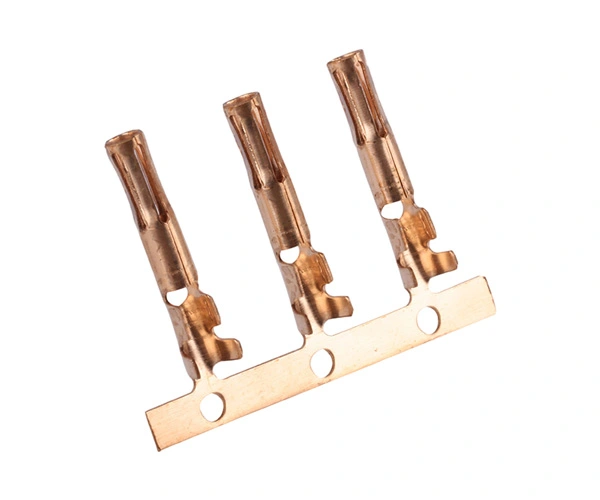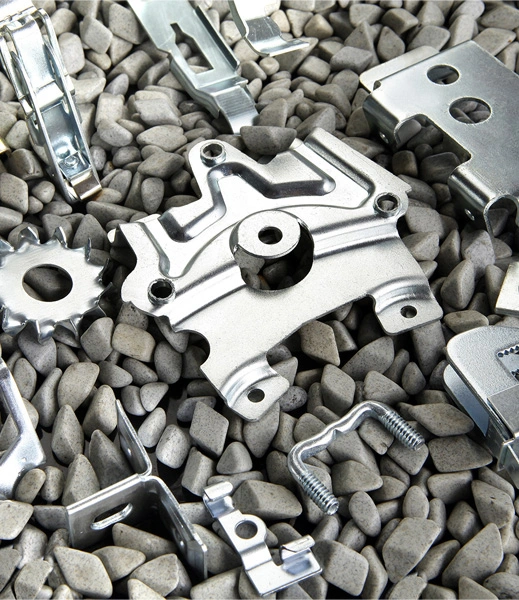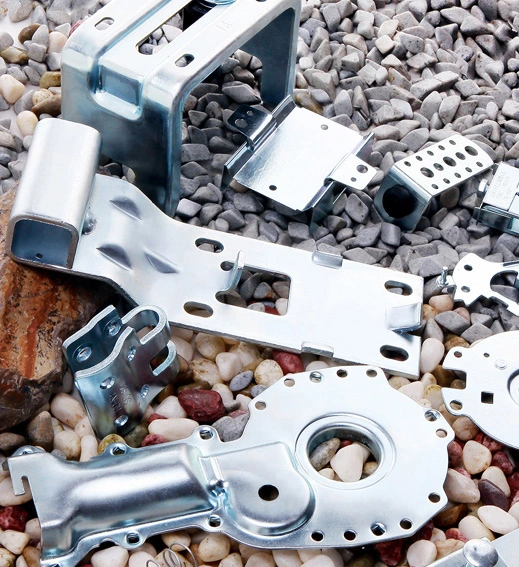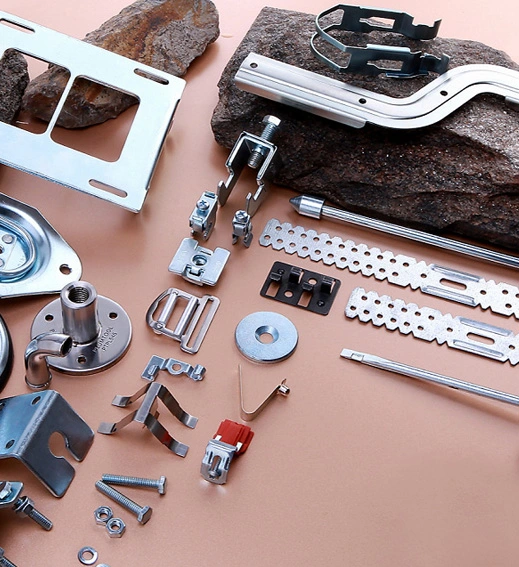

Thickness: 0.4mm
Tolerance: ±0.025mm
Manufacturing process: progressive die stamping
Surface treatment: powder coating /painting /anodization /sandblasting /zinc coating etc available
1. Continuous mold material strip function
Continuous die is the process of arranging the stamping processes (stations) required to complete a product in the same set of molds for stamping. The material used in the continuous mold is coil material, which is sent equidistant by a feeder to each individual engineering station in the mold for stamping processing, and the finished product is completed at the final engineering station. In the continuous mold, materials are processed in stages such as punching, separation, bending, etc., and the remaining materials that link the semi-finished products of various engineering stations are called material belts. Generally, the area with materials inside the mold and the section connecting semi-finished products to finished products at various engineering stations are collectively referred to as the material belt. Experienced mold designers can observe one material belt to know the design method of the second set of molds.
2. Composition of continuous mold material strip
The material strip is composed of a certain positioning hole and a safe width of material. The main function of the positioning hole is to allow the material to be sent to each engineering station for stamping processing at an equal distance, ensuring stamping processing accuracy. The remaining material with edge width is mainly used to link and transmit semi-finished products from each engineering station, connecting and transmitting each semi-finished product to the next engineering station for stamping processing.
(1) Positioning hole diameter
The diameter of the positioning hole is determined based on the feeding distance (pitch) and the width of the material belt, and is generally designed φ For holes larger than 1.5mm, most of them use 0.5mm as the base for selecting positioning holes (e.g.: φ 2.0mm, φ 2.5mm, φ 3.0mm, etc., but nowadays stamping parts are getting smaller and the feeding pitch is also getting smaller. The existing positioning holes have been set to φ 0.7mm.
(2) Strip width setting
The width of the material strip mainly lies in the ability to stably connect and transport various semi-finished products to the stamping engineering station. Generally, the width of the common material strip is set to be ≥ 3.0mm, and it can also be designed according to actual needs.
3. Continuous mold material strip feeding method:
(1) Single side strip feeding type
(2) Double sided strip feeding type
(3) Double strip type
(4) Double independent strip type
(5) Intermediate strip type
4. Application of various continuous mold strip forms:
(1) Single side strip feeding type:
Widely used in connector terminals and smaller stamped parts.
(2) Double sided strip feeding type
Mainly suitable for stamping parts with complex features, high bending height, wide material width, and easy deformation during material belt transportation, as well as larger stamping parts that cannot be transported by a single side material belt. Double side material belt type can be selected.
(3) Double strip type
The double strip type is mainly evolved from the double-sided belt type, with the purpose of material saving design. When using a double-sided belt type, it is necessary to have a Laingce belt for feeding. If a side by side belt is added, it can save the material of one belt. This design can also produce different stamped products, but these stamped products must have the same demand at the same time. When arranging the same stamped products, this restriction is not applicable.
(4) Double independent strip type
Double independent material strips are generally designed to save materials by inserting and arranging two stamped products in opposite directions. Two different types of stamped products can also be arranged on one side for simultaneous stamping. If used for stamping different products, this stamped product must have the same required quantity at the same time. When arranging the same stamped products, this restriction is not applicable.
(5) Middle strip type
This design method is mainly suitable for products with low dimensional requirements and stamping accuracy. Generally, it can improve material utilization, but the relative stamping accuracy and speed are poor. Therefore, it is generally not recommended to use this design mode.



